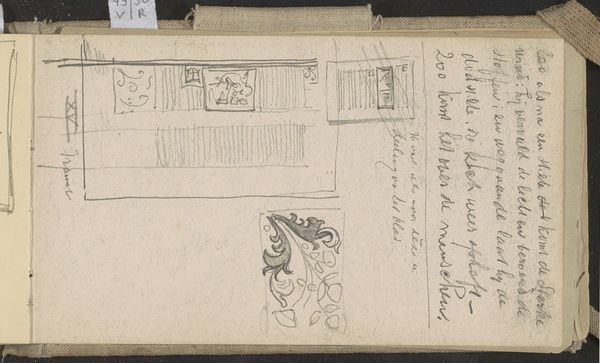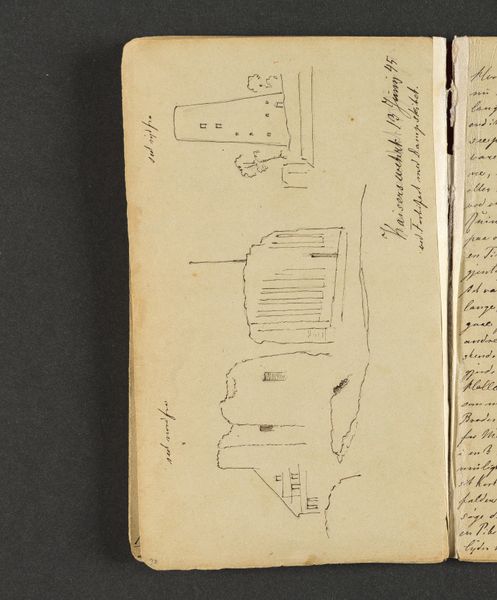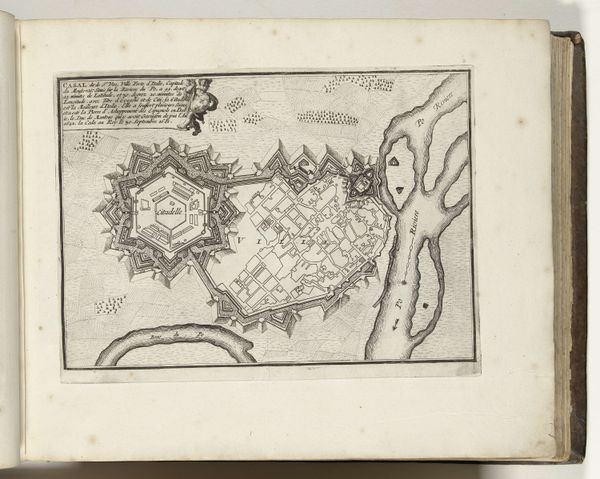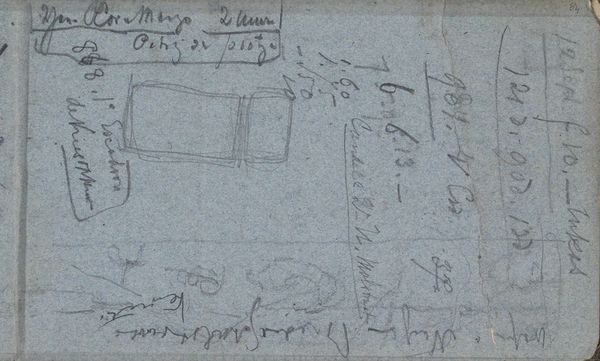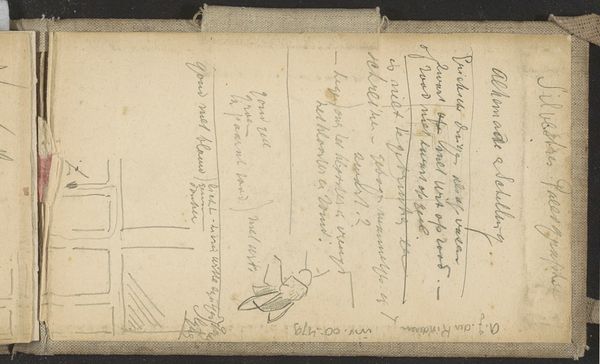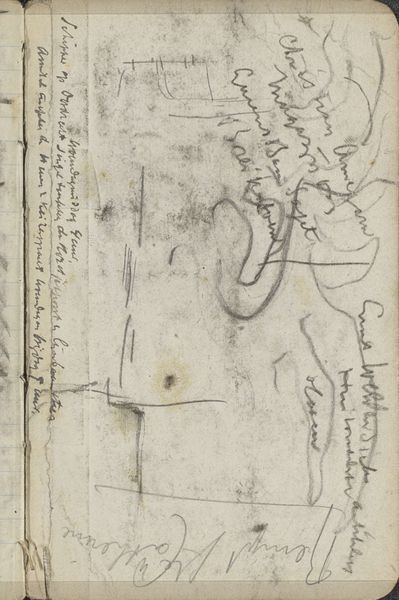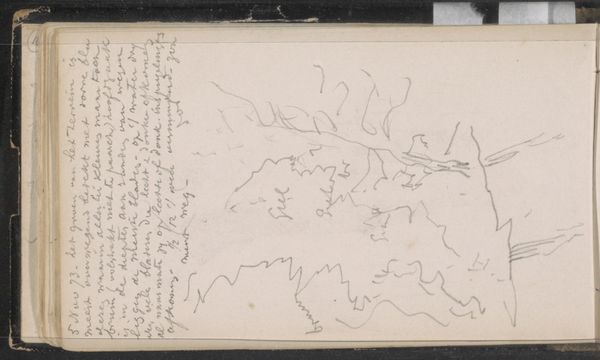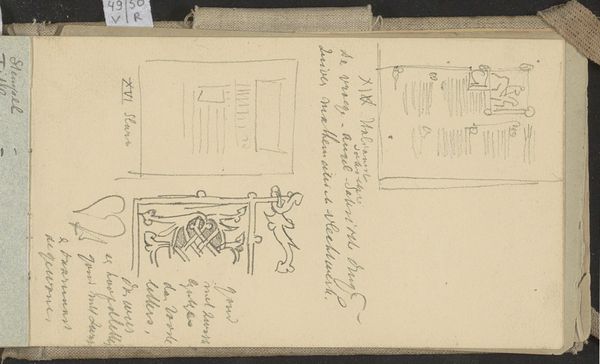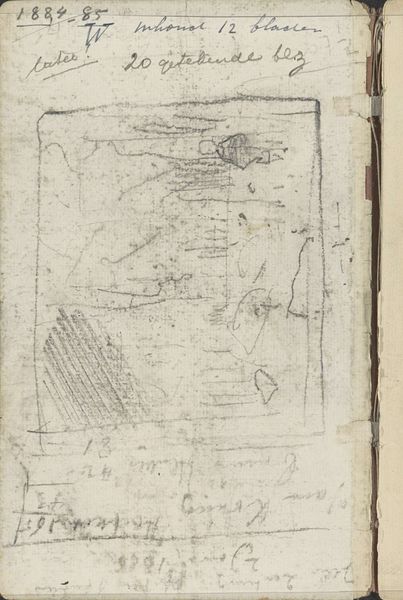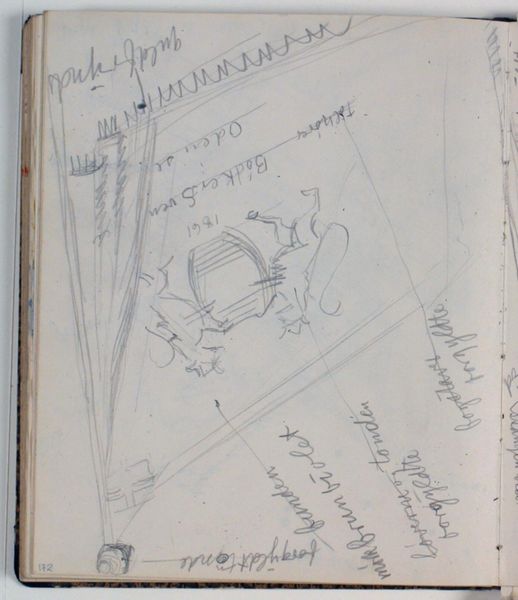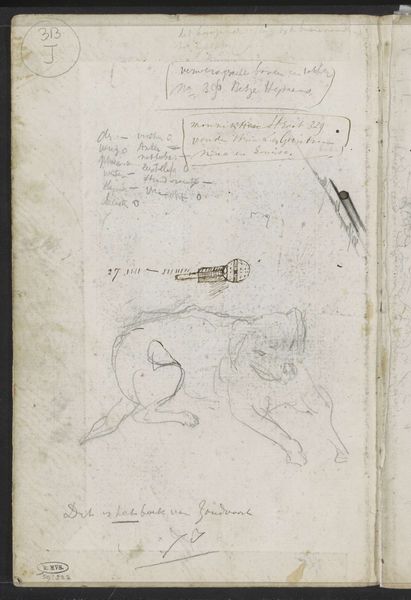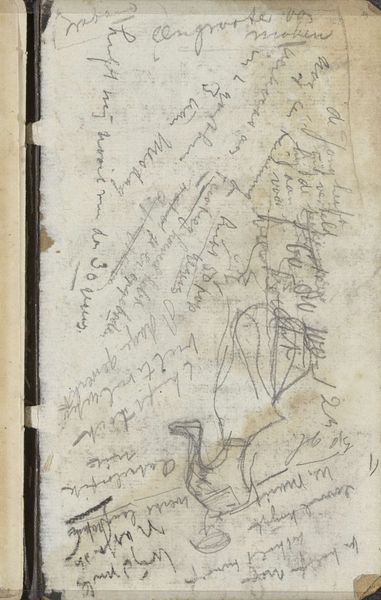
drawing, paper, ink
#
drawing
#
imaginative character sketch
#
medieval
#
sketch book
#
paper
#
personal sketchbook
#
ink
#
idea generation sketch
#
sketchwork
#
character sketch
#
detailed observational sketch
#
sketch
#
sketchbook drawing
#
storyboard and sketchbook work
#
sketchbook art
Copyright: Rijks Museum: Open Domain
Curator: This page from Antoon Derkinderen’s sketchbook, likely dating from between 1892 and 1901, offers a glimpse into his process of designing civic heraldry using ink on paper. It feels immediate, raw, like a direct connection to the artist’s thought process. What stands out to you? Editor: It’s fascinating to see these heraldic sketches – the lions, the horseshoes – in such a raw form. The handwritten notes scrawled across the page suggest so much about their development, about their purpose, even if only hinted at. What’s your perspective on these sketches? Curator: Well, let’s consider the materiality here. The cheapness of the paper and ink suggest a readily available medium for artistic labor. This wasn’t meant for display as high art, but rather as a functional step in the production of something else – an emblem representing civic identity. Does that cheap paper negate any potential value? Editor: No, I see it the other way. The ephemeral nature of the sketch reveals its true value. Derkinderen likely chose these materials to democratize art making, breaking away from formal commissions to offer something accessible to a broader population through printed emblems and flags. What sort of craftmanship details do you find important? Curator: Consider the social context. Late 19th-century Netherlands witnessed a rising sense of national identity, manifested through civic symbols like these. This drawing documents the artistic labor involved in manufacturing that identity through emblems meant to represent people through heraldry in readily mass-produced products like municipal letterheads and signage. It blurs the line between the "high art" of drawing and the "low art" of printing. So much thought and intent are behind these sketches. Editor: That really shifts my understanding. Seeing the materials as a deliberate choice to engage with labor and national identity adds a whole new layer. It makes me think about the hidden work behind every civic symbol. Curator: Precisely. It challenges us to look beyond aesthetic appeal and to examine the means of production. It’s fascinating how something as simple as ink on paper can tell such a complex story. Editor: I agree. This discussion has changed my appreciation for the piece – understanding how materials and process create the means for a broader representation in more widely spread and utilized symbols, like flags, is key to appreciate this form of artistic expression.
Comments
No comments
Be the first to comment and join the conversation on the ultimate creative platform.
